An Ultimate Guide to Best English Wines
An Ultimate Guide to Best English Wines
It’s only a few decades ago when the notion of England achieving anything noteworthy in the world of wine would’ve had warm ale poured on it (the emergence of the great Steven Spurrier, Hugh Johnson and Jancis Robinson notwithstanding).
Because for centuries, England had pretty much no place in that world. Since then, however, the nation has placed itself firmly in the spotlight for the production of multi-award-winning sparkling wines. World-renowned, Champagne-modelled sparkling wine that has come to rival those of even the greatest houses of Reims and Epernay. Such that the best English sparkling wines are now beating the Champenoises at their own game.
So, in this guide we’ll not only compare the two industries, but also have a look at some key producers as well as at the rise of still wine production in England.
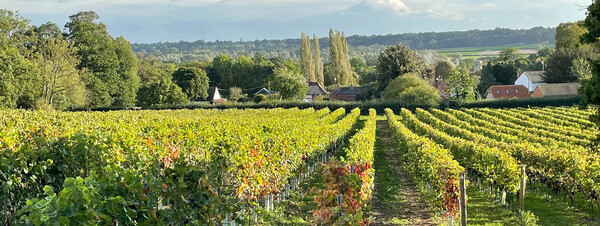
A (Very) Brief History of English Wine
Wine production in England began with the Romans, who introduced vines to the region in the first century. Much later, viticulture flourished in what were warmer climatic conditions of medieval England, with monasteries playing a key role in maintaining vineyards for sacramental use. But with the Dissolution of the Monasteries in the 16th century, accompanied by a much cooler, extended climate trend, winemaking went into sharp decline.
Such that by the 20th century – with the Great War’s demand for food-growing acreage being the final nail in the coffin – it was virtually nonexistent. It wasn’t until the 1950s that pioneers like Sir Guy Salisbury-Jones of Hambledon Vineyard began planting vines and reviving England’s wine heritage.
The turning point came in the late 20th century when producers realised that England’s cool climate and chalky soils (part of the geological continuum beginning in the Champagne region) are ideally suited for growing grapes for sparkling wine.
The Sparkling Wine Revolution
Thus the sparkling wine revolution. The true game-changer for the industry by which this ideal combination of factors found traditional Champagne varietals – chardonnay, pinot noir, pinot meunier – yielding outstanding quality and terroir expression.
This transformation began in earnest in the 1990s, with producers like Nyetimber leading the way. Soon thereafter, international awards started piling up with impressive regularity, and so often to the detriment of Champagne itself.
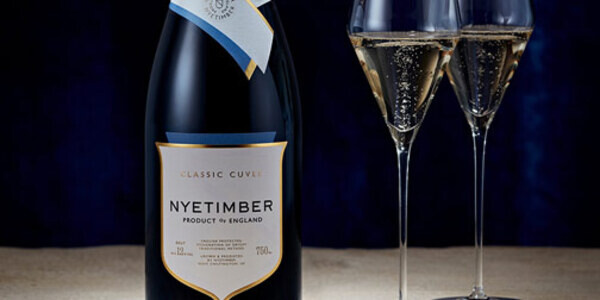
Which is why, now firmly with a glowing, global reputation for refined mousse, fresh, vibrant acidity, and a high, overall level of quality, English sparkling wines have since piqued much interest from the Champagne industry. Such that some big industry names have started investing in English vineyards.
For example, Champagne house Taittinger planted vineyards in Kent under the Domaine Evremond label, investing approximately £4 million in the project. Similarly, Vranken-Pommery has partnered with Hattingley Valley to produce English sparkling wines. Surely no greater compliments could be paid to any sparkling wine sector.
Comparing English Sparkling with Champagne
Same grapes, same méthode champenoise, same calcareous soils. Are there any differences?
Yes:
- Terroir: Both regions share a foundation of chalky soils, which contribute to the minerality and finesse of the wines. However, England’s cooler climate typically results in wines with higher acidity and overall freshness.
- Ageing on lees: Both use the traditional method of secondary fermentation in the bottle, ensuring complex flavours and a refined effervescence. By law, Champagne must be aged for a minimum of 18 months. But since English producers often go for shorter on-lees-ageing periods, there is added emphasis on freshness and vibrancy.
- Flavour Profile: While Champagne is known for its leesy richness and toasty complexity, English sparkling wines by comparison highlight crispness, brightness and purity of fruit.
What’s more, since a warming trend in climate/growing conditions has returned, so have the dynamics in global winemaking shifted. This means that English sparkling wine is increasingly recognised for its sustainability and local appeal, providing a compelling alternative for eco-conscious consumers.
Key Producers to Know
All of this accounts for why these days, the English sparkling wine scene abounds with talented producers. Some key names that have come to define the industry are:
- Nyetimber: Multi-award-winning, West Sussex-based Nyetimber rank indisputably among the greatest of English sparkling wine-producers. One whose skill in achieving such detailed elegance and finesse has their NV, vintage and special-blend cuvées routinely rivalling - indeed, often exceeding - many grandes marques Champagnes. Cuvées indispensable to the English sparkling wine experience.
- Chapel Down: Well known sparkling- and still-wines producer, owning some of the finest vineyards in the country, primarily located on the North Downs of Kent. Their chardonnay, pinots noir and meunier, and Bacchus vines are cultivated on south-facing chalk soils and thrive in a warm, maritime climate. They also source high-quality fruit from long-term partner vineyards across Kent, Sussex, and Essex, allowing them to create balanced wines with distinctive flavour profiles.
- Gusbourne Estate: The only three-time winner of the IWSC English Wine Producer of the Year. Exacting standards guide their winemaking team, from pressing grapes in whole bunches to blind-tasting, blending, and extended ageing on lees and cork. Brut Reserve, Rosé, Blanc de Blancs and Blanc de Noirs as well as a range of premium still wines.
- Ridgeview: Family-run, East Sussex-based, now into their 30th year, whose first vintage release in 2000 won the IWSC’s English Wine of The Year, and whose subsequent, award-winning releases have featured at State Banquets, the Queen’s Diamond Jubilee and on Downing Street’s wine list.
- Hattingley Valley: Since its founding in 2008, Hampshire-based Hattingley Valley has established itself as one of the UK’s most successful wineries, earning over 180 medals, 16 trophies, and Best in Class accolades for its English sparkling wines. They source fruit from a range of regional vineyards in addition to their own, making award-winning sparkling wine and still wines that are enjoyed across the UK and exported to 16 countries worldwide.
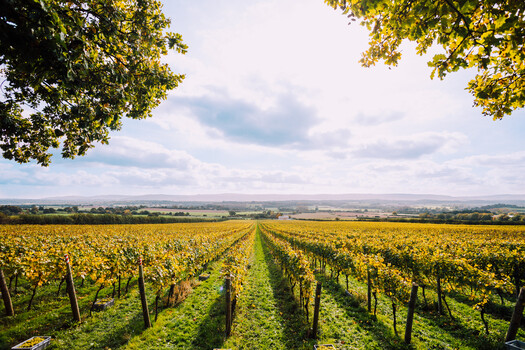
The Key Counties
Here’s where most of the action is – and why:
1. Kent
Why it’s ideal: Because the ‘Garden of England’ benefits from a warm, maritime climate, chalky soils, and long hours of sunshine, particularly along the North Downs. Excellent conditions for growing Champagne varietals, in other words. Bacchus also does well here, which did much to initially establish it as the main option for still white wines.
2. Sussex
Why it’s ideal: As with Kent, both East and West Sussex feature extensive areas of chalky soil (particularly on the South Downs), where cool climate promotes the vibrant, refreshing acidity in the grapes that is the hallmark of English sparkling wine, while long, summer daylight hours encourage the fruits’ full-flavor development.
3. Hampshire
Why it’s ideal: Hampshire’s vineyards, Free-draining chalk soils and a cool, dry climate - particularly on the South Downs - make Hampshire another hot spot, where sparkling wines show fabulous acidity and finesse.
4. Essex
Why it’s ideal: With one of the driest climates in the UK and a relatively long growing season, Essex is particularly well-suited for still wine production. The region’s clay and sandy soils, especially around Colchester, are excellent for bacchus and pinot noir, which produce aromatic whites and youthful, fruity reds.
5. Surrey
Why it’s ideal: Surrey, too, shares the same geological phenomenon as Kent, Sussex and Hampshire where once again, chalky soils make for favourable sparkling wine growing conditions. The region’s slightly warmer microclimate is ever more ideal for gaining good ripeness.
6. Cornwall
Why it’s ideal: Cornwall benefits from a mild, maritime climate due to its proximity to the Atlantic Ocean which reduces the risk of frost and promotes slow, even ripening in the vineyard.
7. Dorset
Why it’s ideal: Another emerging county ideal for production, given the share it enjoys of the concentrated limestone soils running along the south coast. Coupled with a fresh, maritime climate, here is yet more fertile ground where relatively low rainfall reduces disease pressure to promote enhanced fruit quality.
8. Gloucestershire and Herefordshire
Why they’re ideal: Here, pockets of warmer microclimates and fertile soils, which are ideal for still wines, especially aromatic whites like Bacchus and Seyval Blanc.
9. Norfolk and Suffolk
Why they’re ideal: The East Anglian counties benefit from a dry climate (ideal for low disease pressure) and sandy soils, making them suitable for bacchus, pinot noir, and other still wine varietals.
The Rise of English Still Wine
But not all that sparkles is English wine. While sparkling wine production continues to dominate the narrative, still wines continue to carve out a niche of their own. Here, the cool climate and relatively short growing season favour aromatic whites, delicate rosés and lighter, fruitier reds, and where blended cuvées are increasingly common.
Bacchus, an aromatic grape having much in common with sauvignon blanc, has become England’s flagship still white wine variety. Its refreshing, vibrant acidity and notes of elderflower, gooseberry and green apple make it a popular choice.
Chardonnay is also now used for still whites, along with lesser known pinot blanc, schonburg, madelein angevine, huxelrebe, müller-thurgau, and reichensteiner. Owing to their cool climate nature, all tend toward the leaner, crisper, orchard fruit end of the spectrum offering typical aromas and flavours of fresh pear, apple, white flowers, white peach and freshly cut grass. All superb when paired with seafood, shellfish and goats’ cheeses.
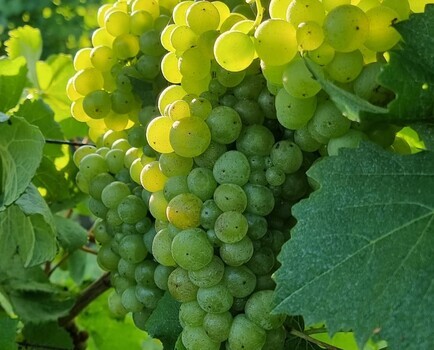
For red English wines, pinot noir tends to be the most popular, with pinot précoce, rondo, regent, and dornfelder in support. These typically render juicy, vibrant, red and black, sweet and bitter-cherry flavours, savoury spice and violet florals, with lots of mouth watering acidity to make English reds great food-pairing options, especially with gammon, charcuterie and roast bird.
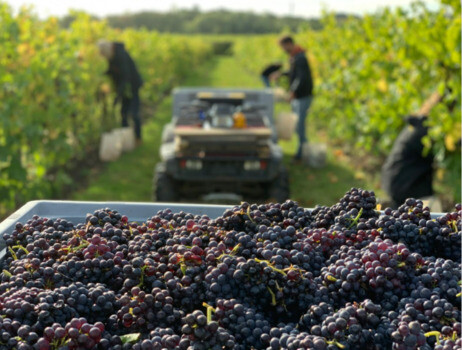
These red varietals are also used for making rosé wines in a crisp, delicate, elegant style not unlike those of Provence.
It’s also worth pointing out that fruit yielded for sparkling wine production rarely crosses over into that of still wines. The Champagne chardonnay and pinot noir clones more specifically have particular attributes which better qualify them for sparkling wine. For still wines, Burgundian clones will be cultivated owing to their better capacity for ripening.
In addition to traditional wine regions like Sussex and Kent, Essex and Suffolk have emerged as ideal terrains for still wine production, where pinot noir, chardonnay and bacchus consistently achieve excellent levels of ripeness.
The Future of English Wine
With ongoing global recognition, increased investment, and a dedication to quality, the production of English wines looks poised for continued growth. And as with a warming climate trend also continuing, the effect on traditional winemaking regions could make England’s historically cooler climate ever more advantageous.
Explore Mr.Wheeler’s compact range of English still and English sparkling wines. Whether you’re a seasoned wine enthusiast or a curious newcomer, you’ll find all the elegance, craftsmanship and terroir expression to put Albion firmly on your wine-regions map.
-- David Adamick, Mr.Wheeler Wine
